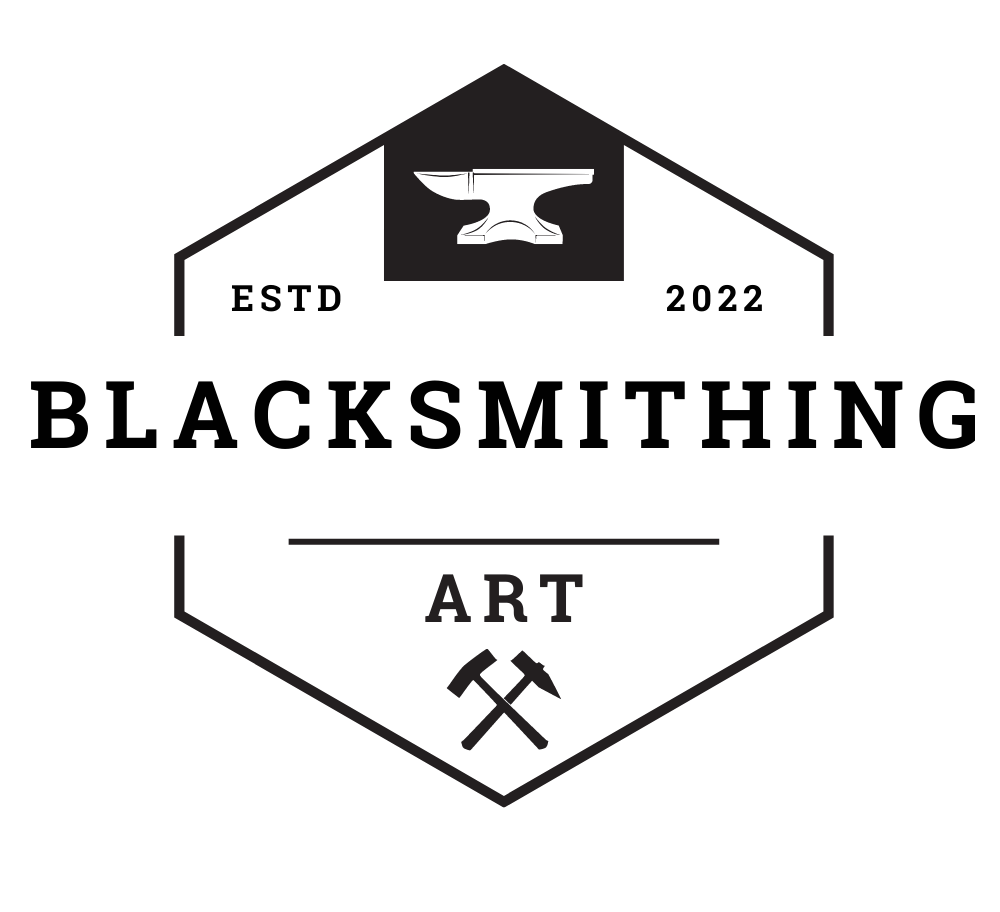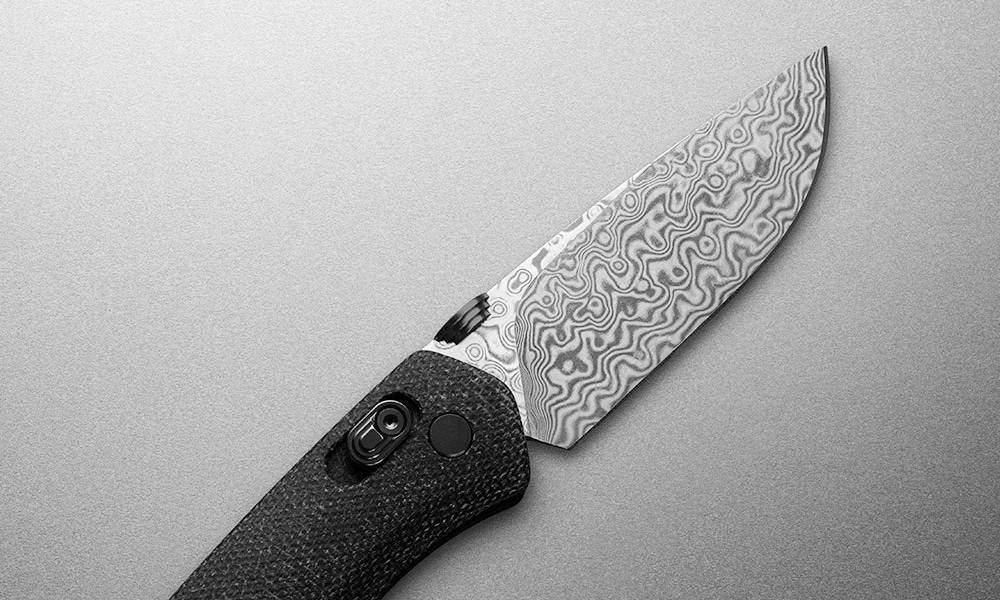One of the most exquisite and expertly manufactured knives on the market is the Damascus knife. A Damascus knife is the best choice if you want a blade that will endure forever. We will go over a comprehensive explanation of Damascus knives in this article. We’ll discuss the origins of Damascus steel, its types, and the qualities to look for when purchasing them.
A new revival of the legendary Damascus steel whose mysterious forging procedure was preserved by a limited few has been observed recently. As all known methods of steel production vanished, it was thought for ages that this distinct forging process would be lost to history.
Knife making is one of the most prevalent applications of Damascus blade steel. Thankfully, advanced technology and metallurgical science have improved sufficiently for researchers to find contemporary methods to reproduce the durable and magnificently intricate Damascus steel. Modern Damascus steel fabrication remains a work of art.
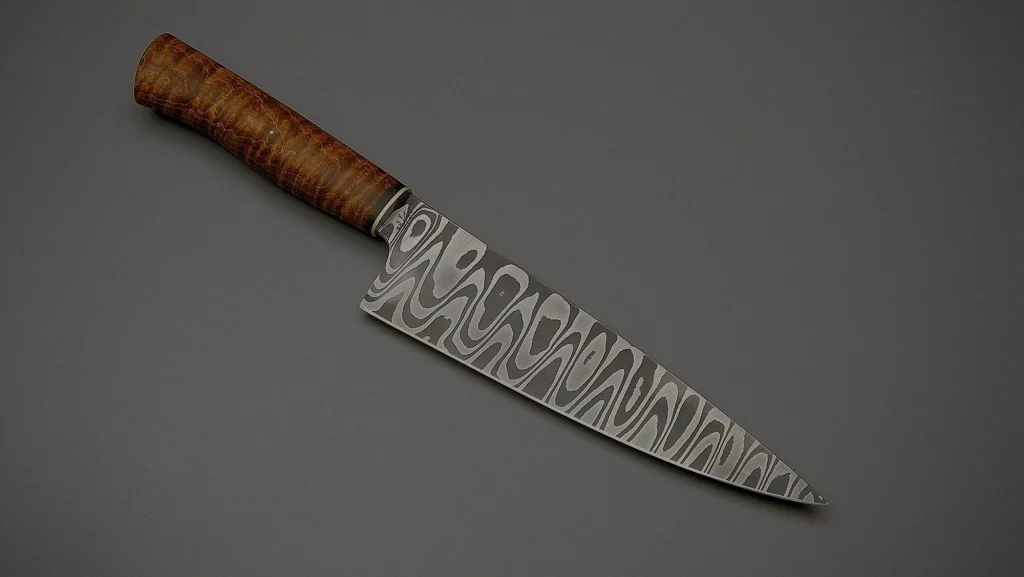
Commercially available high-carbon steels utilized in modern Damascus steel blades, such as 15n20, are purposely mixed with metals such as vanadium and nickel to generate certain properties, and sophisticated and detailed patterns can be found on Damascus steel knives.
Modern Damascus steel blades are now made of a variety of steel kinds that are welded together to make billets. Iron strips are frequently used in these billets to add the required molecular hardness.
Contents
- 1 History
- 2 Steel composition of Damascus steel knives
- 3 Wootz Damascus steel
- 4 Damascus knife patterns
- 5 Damascus knives types
- 6 Things to put in mind when purchasing Damascus steel knives
- 7 Types of Damascus steel
- 8 Tips for cleaning Damascus steel
- 9 What type of steel is best for Damascus?
- 10 What is the best type of Damascus?
- 11 How many layers is good for Damascus steel?
- 12 Are more layers of Damascus steel better?
- 13 Conclusion
History
Damascus steel was formerly an unrecorded forging method used by Middle Eastern blacksmiths, and it was named for the location of what is now Syria’s capital. Although some evidence suggests Damascus steel originated in 300 B.C., the earliest accounts of the renowned steel date from between 300 and 500 A.D.
The Crusaders saw the legendary blade’s unmistakable sharpness in use by Arab fighters during the Crusades of the eleventh century, giving Western Europe its first actual taste of Damascus steel. Due to the fierceness of these Arab fighters and their distinctive blades, rumors about them began to circulate across the European continent and the Middle East.
The different swirling designs on the flat of the blade make traditional Damascus steel easily distinguishable.
It’s thought that the unusual designs came from blocks of wootz steel from Sri Lanka and India.
The various impurities found in these wootz steel ingots, including tungsten and vanadium, when combined with the conventional Indian smelting method and the numerous layers applied to each blade to prepare them, resulted in the gloriously sharp and distinctively patterned Damascus blades.
For ages, the Arabs were able to import wootz ingots successfully. The world started to lose contact with the creators of this unmatched steel, though, as boundaries changed, conflicts were destroyed, and wootz stocks depleted. Regrettably, by the middle of the 18th century, both the blades and the methods used to make them were utterly lost.

Steel composition of Damascus steel knives
The fundamental elements of Damascus steel are brittleness and ductility. The latter enables material compression to absorb additional energy which would ordinarily limit or prevent failure in the blade’s integrity. The former is confusing because fragility is typically associated with brittleness.
However, in this instance, the term indicates the level of flexibility required to support edge sharpness while also preventing shattering. This structural phenomenon guarantees that the Damascus blade cuts easily and is long-lasting.
The convex grind adds sharpness to its thin edge, allowing sliced material to yield to the sides during the stroke and therefore reducing “sticking,” which is common with blades with blunter edges. Because of the brittleness of Damascus steels, the convex grind is required.
Also, carbon nanotubes grow in the steel during the forging process, allowing malleability and sustained strength. The high carbon content ensures a significant quality in steel integrity, ensuring great performance. This clarifies why carbon is so important in the production of Damascus steel blades.
Little steel ingots slowly develop into the desired shape of a blade throughout the forging process. This enables the iron carbides to align into bands that generate distinct patterns, which are suggestive of grains in ancient Indian Wootz steel and reflect earlier aesthetics and production styles.
Blacksmiths today are making Damascus steel blades just like it was discovered centuries ago.
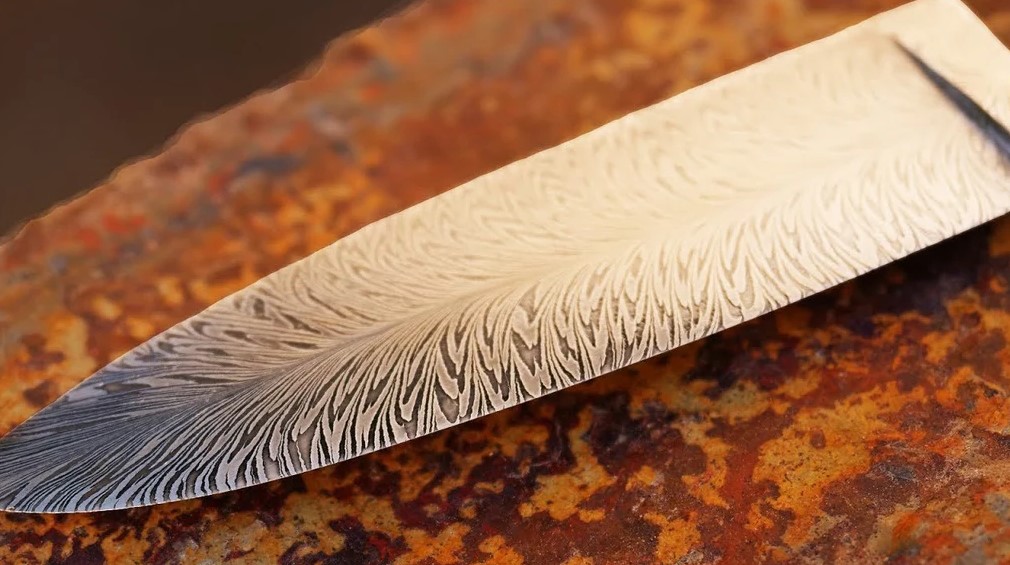
Wootz Damascus steel
Wootz steel was an extremely pure form of high-carbon steel billets that was disintegrated with a variety of additives to give it a cool appearance when it was taken out and inscribed in an acidic liquid following the forging process.
The longer and marginally better comprehensive response is that wootz steel displayed a “wave” or “water” pattern while hammering.
It was created in present-day south India, sometime in the 5th century.
The way the steel grain organizes around impurities in Wootz steel is where the original Damascus pattern originated.
Damascus knife patterns
I believe it is safe to state at this juncture that the pattern is the main quality of Damascus steel, which makes it worthwhile to discuss some of these patterns. Blades made of Damascus typically have a few basic patterns.
Yet with expert smiths, the possibilities are endless. As you get into mosaic designs, Damascus becomes a completely different show. But mass-produced knives typically don’t have that.
Random: In this case, the layers stay flat while the patterning process creates a flowing, organic design
Twist: A star pattern is produced by twisting the billet after it has been heated to just below welding temperature.
Ladder: To make layers of stacked wave patterns, grooves are ground on the opposing sides of the bar, then pressed and flattened.
Raindrop: To make shapes resembling raindrops on a pond, dimples are pressed or machined into the bar’s sides, then pressed like the ladder pattern.

Damascus knives types
Damascus steel knives are available in numerous shapes and sizes. Whatever kind of knife you’re looking for, there’s a good chance that you may find one made of Damascus steel. Damascus knives are created in a more intricate, specialized way than conventional blades, but that’s essentially the reason they’re so popular, so there are lots of variants available.
Knives created in the Damascus style nowadays are all made identically. The blade of a knife is made from multiple-layered steel alloys, whether it is hand-forged or not. Below are typical types of Damascus knives.
Fixed blades
Every knife that has a blade that is “fixed,” or not on a pivot, and is securely, permanently connected to the handle, is considered a fixed blade. Comparatively speaking, they are the reverse of pocket knives.
Except for sheaths, the blade is usually visible. Because there is no complicated locking mechanism, they are simpler to produce compared to folding knives, and are more user-friendly. Most fixed blades contain a thin metal that is either bonded or pinned inside the handle, which makes them more vulnerable to breaking.
Folding knives
A folder, often known as a pocket knife, is a small knife with blades that tuck into the handle rather than a large sheath. These knives are designed to fit easily into your pocket, are convenient to carry, and are often legal to carry.
Although there are several exceptions, they are generally smaller than fixed blades, with blades that are normally between three and four inches long. They are highly useful, though, and can be used for a variety of tasks, including apple peeling, rope cutting, and serving as a defense item.
They are extremely adaptable even though they are often smaller and frailer than their fixed-blade counterparts.
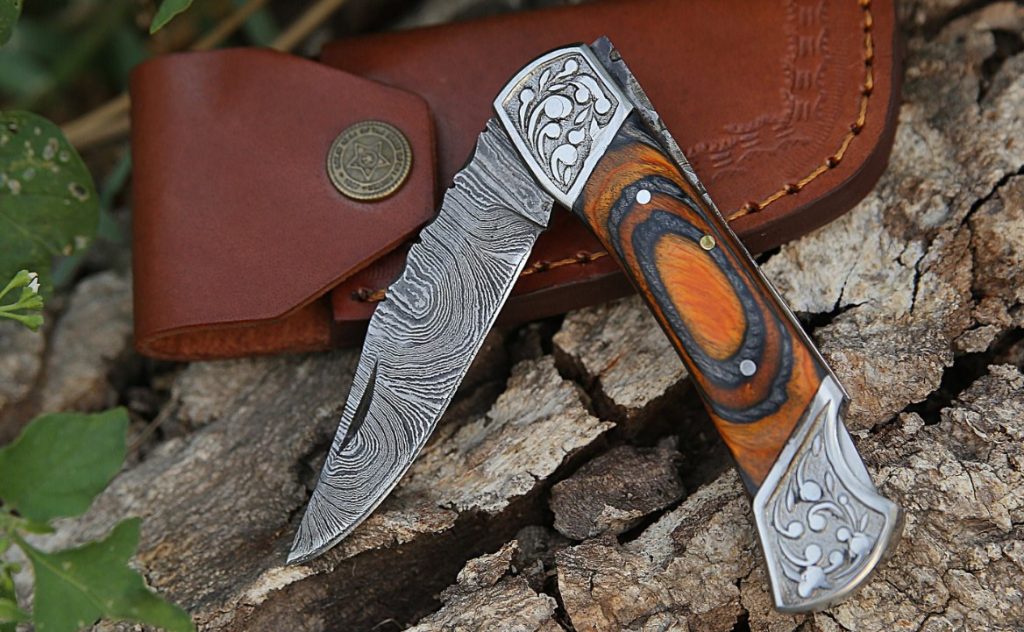
Things to put in mind when purchasing Damascus steel knives
The blade’s length
Your ability to utilize a Damascus knife may be severely restricted by a blade that is either too long or too short. For your regular applications, you should choose the ideal length. A three to four-inch folder, for instance, will probably work well for the majority of daily circumstances if you need a day-to-day knife.
But you’ll require a longer fixed blade if you’re utilizing it for outside activities like hunting, camping, or food preparation. The rules governing knives in your area are an important factor as well. Avoid buying a knife that is too lengthy for you to carry lawfully.
The shape of the blade
The blade shape and general morphology are two of the most crucial factors to consider when choosing the best blade for your activity because they have a significant impact on both the durability and effectiveness of your knife.
You wouldn’t want to use a chef’s knife to skin a deer or baton through a timber.
While some tasks call for a stronger blade, others call for a sharper blade. If used for cutting, a knife with an extremely thin tip might break, but it might be perfect for delicate, intricate work.
Steel type
Many different kinds of steel can be used to create Damascus steel. There are several different ways to make it, all of varying quality. Although there are some great, reasonably priced pattern-welded Damascus blades available, if you don’t know what to look for, it can be challenging to distinguish them from the subpar ones.
We suggest only purchasing Damascus from reliable, well-known companies and, if at all feasible, sticking with stainless Damascus. High carbon steels, on the other hand, typically offer superior toughness, thus based on their intended function, you could have to choose pattern-welded steel.

Types of Damascus steel
Pattern welded steel
This modern steel version is created by forge welding a minimum of two completely different metals together and is by far the most typical method of creating Damascus pattern steel.
They are folded and welded once more after being forge-welded together to create an ingot, which is then drawn out and shaped into the basic shape of the blade. The blade is then heat-treated, tempered, and ground.
Stainless Damascus steel
Damascus steel might be stainless or not based on the steel or metals utilized. Both sheets of steel need to contain a minimum of 14% chromium for the Damascus to be stainless. The procedure is identical to that of pattern welding, however, stainless steel is used instead of high-carbon steel.
While the most obvious benefit is a substantial improvement in corrosion resistance, there is also often an improvement in quality because this is more difficult to produce than pattern-welded Damascus steel.
Damasteel
Using particle metallurgy (PM), Damasteel produces extremely high-quality stainless Damascus that functions like CPM154 steel and has significantly reduced impurities and imperfections than pattern-welded Damascus.
The PM process has also given it greater durability and edge retention. Although this choice is the most expensive, your money’s worth is gotten.
Does Damascus steel rust?
Given the appropriate circumstances and enough carbon in the steel, any steel will rust, but pattern-welded Damascus made of high-carbon steels like 1095 is where corrosion is most noticeable. To eliminate even the tiniest possibility of rust, it is essential to maintain a non-stainless Damascus.
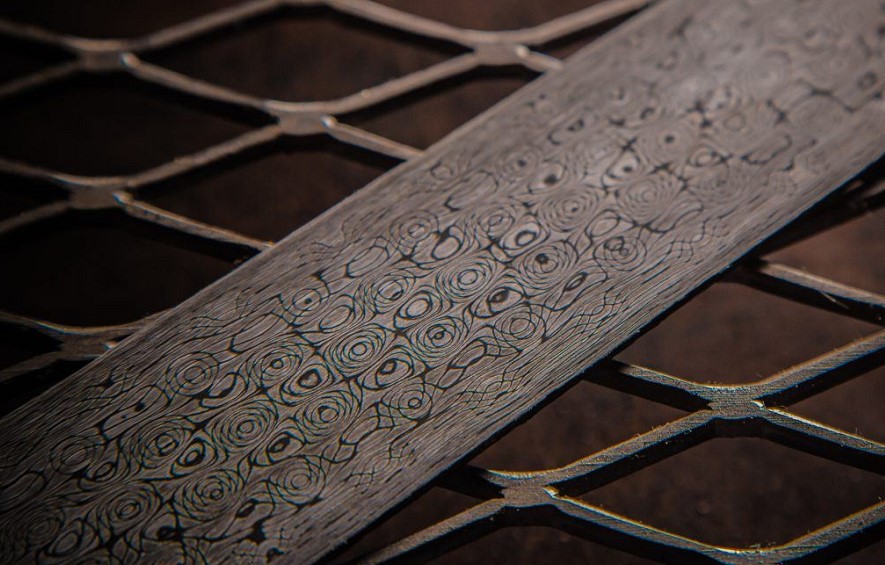
Tips for cleaning Damascus steel
The most effective method for guaranteeing the durability of Damascus steel is to take care of the blade as directed by the manufacturer. After each usage, it’s crucial to rapidly clean and dry your knives to get rid of any organic substances that could contribute to the steel’s deterioration.
When choosing carbon Damascus steel blades, be sure to properly dry any excess water before putting the blades away because carbon blades are more likely to rust and corrode. To keep the edge, sharpening them frequently is also required. Weekly polishing will help to maintain and improve the delicate Damascus patterns’ brilliance.
Regular oiling will maintain a bright gloss that also highlights the Damascus pattern if the blade is intended for ornamental rather than practical use. If you don’t want to cope with the extra upkeep, stainless-steel Damascus steel knives are your best bet.
Stainless steel Damascus is significantly easier to care for and, depending on the steel used, can be rust and corrosion-resistant.
Damascus kitchen knives
It will be considerably different from the Damascus recipe if you want to create kitchen knives. The term “stainless steel” refers to a class of corrosion-resistant ferrous alloys. They have a barrier that shields them from the damaging effects of moisture and the atmosphere. The main ingredients used to make stainless steels are carbon, chromium, and iron.
The final one is the one that separates stainless steel from normal steel. To qualify as stainless steel, a material must have a chromium content of at least 10.5%. This group of steels serves as the most significant alloying component.
VG1 steel, which originates from Japan, has a greater carbon content than the majority of VG steel. This steel was utilized before VG10. It is well-recognized for having extremely sharp edges. The strongest steel in the AUS series is known as AUS10. It retains its edge well and is simple to sharpen. It is relatively delicate due to its hardness.
For this reason, a particular amount of nickel, manganese, and silicon is added to the mixture. The ductility and flexibility of the steel have now been considerably improved by that whole mixture of alloying elements. With all of that, we can say with confidence that AUS10 steel is the best available for producing Damascus kitchen knives. You won’t regret your purchase.
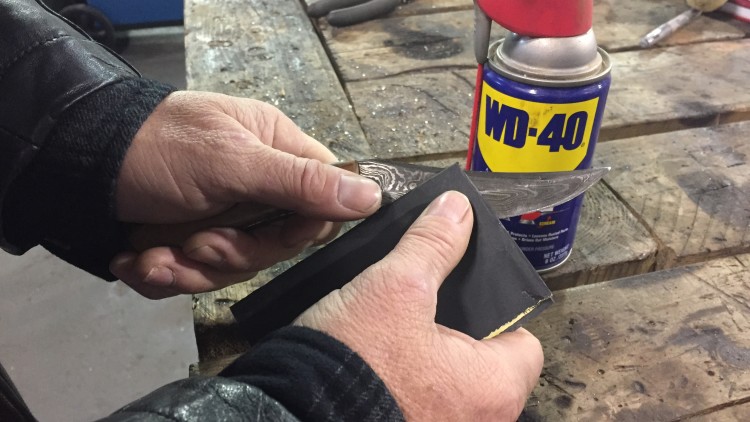
What type of steel is best for Damascus?
15n20 steel is unquestionably among the most prominent steels for Damascus knives. Aside from being high-nickel steel, it is also high-carbon steel containing 0.7-0.9% carbon.
It possesses a high toughness, which makes it a great steel for Damascus blades.
This steel exhibits little deformation during thermal treatment, which is a plus. When it comes to quenching, this steel must be handled in oil.
What is the best type of Damascus?
The fixed-blade knife is the best and most common variety of Damascus blades. This is because it’s the most resilient and has the longest lifespan. It is ideal for outdoor pursuits like camping, trekking, and hunting because of its durability. The knife is additionally useful for regular activities, like chopping vegetables or cutting parcels open.
How many layers is good for Damascus steel?
If you’re producing Damascus steel by hand, you might be curious about the number of layers necessary. The American Bladesmith Association recommends they contain about 300 to 500 layers to provide the best results, however, some custom knife makers have created blades with more than 500,000 layers.
Are more layers of Damascus steel better?
It’s a popular fallacy about Damascus steel knives that the more layers, the better. In actuality, three layers perform the same function as more layers. Sharpness and hardness of the edge are provided by the VG-10 core layer, while the two outer layers account for corrosion avoidance. The layer count will also take into account the blade’s Damascus pattern.
Performance is unaffected by the number of layers, it only influences the fineness of the lines as well as how many are visible on the Damascus knife. Nonetheless, it certainly enhances its beauty.
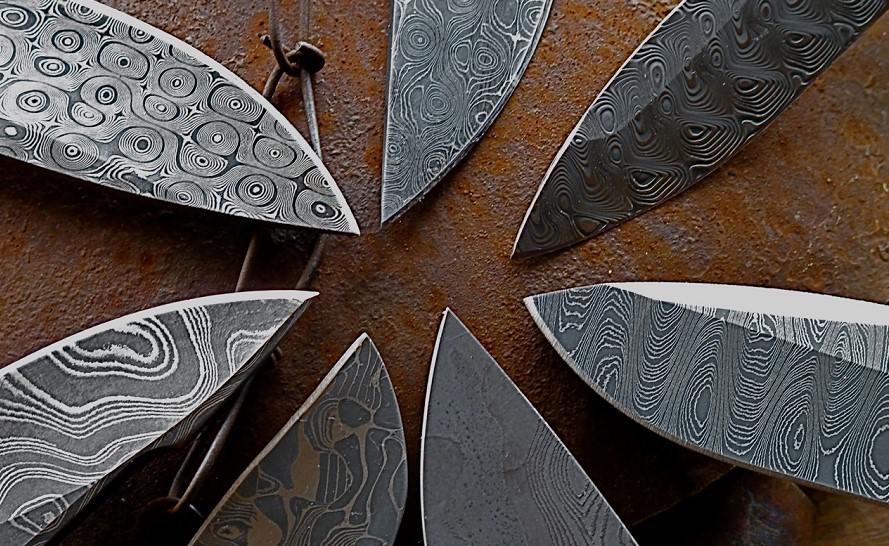
Conclusion
After reading our article, hopefully, you’ll have a better understanding of the various advantages of Damascus steels as well as some advice on how to choose the best one for you. We hope that by demystifying these knives, you’ll think twice about buying one when next you need a new blade.
Also Read: What Are the Strongest and Hardest Metals on Earth?
